Everyone's online nowadays—accessing several social media apps several hours a day as if their lives depended on it. And as they say, in order to reach your customers, you must go where they go.
As a business, you must establish a presence on the social media networks that your customers frequent. But with several different social media platforms available today, how would you know which one to use? What each one can do for your company? And if you finally choose one, how do you start?
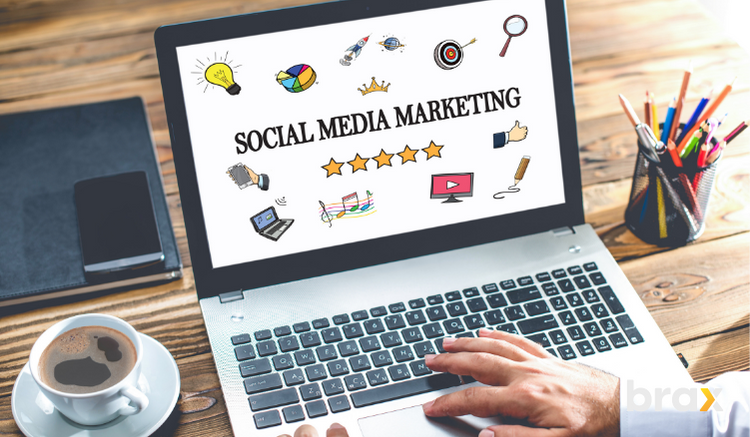
Table of Contents
Social Media Marketing: What is it Exactly?
Different Approaches to Social Media Marketing
Organic Social Media Marketing
Different Social Media Advertising Platforms
How to Create a Social Media Marketing Plan
Frequently Asked Questions on Social Media Marketing
Social media marketing can be a complex and daunting task, but it's also one of the most effective ways to reach new customers and grow your business. That's where we come in.
In this guide, we'll explore all the basics of social media marketing, from its root definition, to the various disciplines, to the different types of social media ads you can use. We'll also talk about how you can create a social media marketing plan and we'll give you some tips for creating successful social media marketing campaigns.
Social Media Marketing: What is it Exactly?
We all know that social media networks are online spaces where users can share content and interact with others. These platforms have been around since the early 2000s, but their use has exploded in recent years.
According to Statista, there are now over 4.2 billion social media users around the world, and that number is only going to grow. Each user spends an average of 145 minutes a day on social media, consuming all types of content from text, to images, to videos.
With this much activity comes great opportunity for advertisers and businesses worldwide, which is why Social Media Marketing was born.
But what is social media marketing, and what does it entail?
Simply put, it is the process of using these social media platforms to reach new customers and grow your business.
It involves creating content that resonates with your target audience, targeting that audience with paid and organic content, and measuring the success of your efforts.
Social Media Marketing is the method of promoting your business or brand on social media platforms like Facebook, Instagram, Twitter, TikTok, and WhatsApp.
It works by drawing people to your online content and then converting them into customers.
There are various disciplines within social media marketing that you can use to reach your customers. Each social media platform has its own unique features and user base, so it's important to understand which ones will work best for your business.
But before we talk about the different types, let us discuss the benefits first.
Benefits of Social Media Marketing
It can be hard to know whether or not social media marketing is worth your time and effort. But Social Media Marketing doesn't have to be difficult. In fact, when done correctly, it can be an incredibly powerful tool for growing your business.
So before you start looking into other forms of marketing, let me share with you a few benefits to using this marketing style that will help you evaluate whether or not it is right for you.
1. It is good for any business size.
Whether you are a small business or a large enterprise, social media marketing can help boost your online presence and increase your customer base.
Small businesses, in particular, can benefit greatly from social media marketing. Social media platforms are a great way to reach new customers, and they're cost-effective too. In fact, a study by Social Media Examiner found that small businesses that use social media marketing grow their business at a faster rate than those that don't.
Medium to large enterprises should not dismiss social media, too. Audiences are switching to online apps and social media, and have been watching television less and less.
Out of sight, out of mind—so if well-known brands don't have social media exposure, then their customers might forget about them. The more exposure they have on social media, the better for their business.
2. It is cost-effective.
One of the best things about social media marketing is that it is a very cost-effective way to reach your target audience. You can get started with very little investment, and you can use organic or paid methods to reach your customers.
Organic methods involve creating content that is interesting and relevant to your target audience and sharing it on social media platforms for free. All you need is a social media account and some creative content.
Paid methods involve using advertising tools that are available on social media platforms to target your audience with specific ads. These ads can be very effective in reaching people who are interested in what you have to offer faster and more targeted.
An example of this is the Facebook Advertising marked "Sponsored" you see on your news feed.
We shall discuss these two approaches thoroughly later.
3. It is highly measurable.
Another great thing about social media marketing is that it is highly measurable. This means you can track the success of your campaigns and determine what is working and what isn't.
You can track things like how many people saw your ad, how many clicked on it, how much traffic is generated to your website, and how many sales were generated as a result. This information can help you to make adjustments to your campaigns in order to improve their effectiveness.

4. It helps you build relationships with customers.
One of the most valuable things about social media marketing is that it helps you build relationships with your customers. When you engage with your customers on social media, they feel like they are interacting with a real person, not a faceless company. This helps to create trust and loyalty with your customers.
Relationships with customers are important because they help you trust and build your business.
It's all about communicating with them to create a bond between customer and company, so they feel like they have less risk whenever it comes to buying a product or service together.
When customers trust you and feel like they have a personal connection to your brand, they are more likely to buy from you.
5. It helps you stay at the top of your customer's minds.
Another great benefit of social media marketing is that it helps you stay top of mind with your customers. When people are interested in what you have to offer, they will more likely think of you when they need your product or service.
Social media platforms are a great way to stay in front of your customers and keep them updated on what you're doing. You can share blog posts, images, videos, and other types of content that will help to keep your brand top of mind.
6. It helps you build brand awareness.
When you promote your business on social media, you're exposing it to a wider audience than you would reach with traditional advertising methods. Social media platforms have a large reach, and when you use them to promote your business, you can reach a lot of people quickly.
This increased exposure can help to build brand awareness for your business. When people see your brand often, they are more likely to remember it and consider it when they need what you offer.
7. It helps you get more traffic to your website.
One of the main goals of social media marketing is to generate traffic to your website. When people see your content on social media, they may visit your website to learn more.
This increased traffic can help to boost your website's ranking on search engines and improve its visibility. Additionally, the traffic generated from social media can help to increase sales and conversions on your website.
As you may have noticed, many eCommerce businesses use social media to gain traffic. Not just because they can get more exposure, but because they have determined that their buyers frequent social media platforms.
8. It helps increase your brand authority.
When you have a strong social media presence, it can help to increase your brand authority. Your followers will see that you are an expert in your industry and that you know what you're talking about.
This increased authority can help to attract new customers and convince current customers to do business with you again. Additionally, it can help to boost your website's ranking on search engines and improve its visibility.
Also, think about a company that has Facebook Page compared to a company that doesn't have one. Who would you trust more? You'll more likely trust one with an FB page, right?
Different Approaches to Social Media Marketing
Now that you have seen the benefits of social media marketing and you've been convinced to actually go for it, it's time to learn how to do it effectively.
There are two main approaches to social media marketing: organic and paid.
Organic Social Media Marketing
Organic social media marketing is a process where you promote your business or brand without using any paid advertising. This approach relies on drawing people to your online content and then converting them into customers through organic means such as referrals or word-of-mouth.

How to Utilize Organic Social Media
There are a few key things to keep in mind when doing organic social media marketing:
1. Always produce high-quality content.
This is the key to getting people to visit your page and stick around. If your content is good, they will be more likely to share it with their friends, which will help you reach a larger audience.
When it comes to organic social media, quality content is key. This means posting content that is interesting, valuable, and relevant to your audience. You should also make sure that your content is well-written, well-designed, plagiarism-free and error-free.
In order to produce high-quality content, you may need to invest in some good content creation tools or hire a professional copywriter.
2. Post on social media regularly and consistently.
This is another key element of organic social media marketing. If you don't post often, your followers will lose interest and move on to other pages.
Furthermore, the more you post and the more your audiences engage with your content, the more the social media platform of your choice will show your content to more people.
Ideally, you should be posting new content at least once a day. But it is still best to look into your audience's engagement trends. Some industries or niches might require more or less posting than others.
3. Engage with your followers.
One of the best things about organic social media marketing is that it gives you a direct line of communication with your customers and followers. This means responding to social media posts, comments, answering questions, and engaging in conversation with your audience.
Not only does this help to build trust and loyalty with your followers, but it also helps you learn more about them and what they want from your business.
4. Be genuine.
When you're engaging with your followers, it's important to be genuine. Don't just post or respond to things for the sake of doing so. Actually, take the time to read what your followers are saying and then reply in a way that shows that you care.
People can tell when you're not being genuine, and this will only make them distrust you and your business.
Benefits of Organic Social Media
The main benefit of organic social media marketing is that you can advertise to your audiences at next to nothing. This means if you have no budget for advertising, you can still get the full advantages of social media marketing as long as you put in the effort.
Paid Social Media Marketing
Paid social media marketing is the process of using paid advertising to promote your business on social media platforms. When you use paid advertising, you are paying for space on a social media platform to promote your business.
We will discuss more on the types of paid social media marketing (also known as Social Media Advertising) in the next section. For now, let us discuss the benefits of going for paid social media marketing than organic social media.
Benefits of Paid Social Media
The main benefits of paid social media marketing are:
1. You can reach a much larger audience.
Paid social media advertising allows you to target a specific audience based on demographics, interests, and behaviors. This means that you can reach more people who are likely to be interested in your product or service.
Social Media Advertising's targeting options are unbelievable immense that you can deliver your ads to the exact people that have the best chances of becoming your customer.
2. You can track results more accurately.
Paid social media advertising allows you to track how many people clicked on your ad, how many converted into customers, and what the return on investment (ROI) was.
This information allows you to make better decisions about where to allocate your advertising budget in the future. Almost all networks have social media analytics that gives you an idea of the performance of your posts because they know how important for businesses like you.
3. You can create more effective ads.
Paid social media advertising allows you to test different versions of your ad to see which one performs the best. This helps you to create ads that are more likely to convert people into customers.
Furthermore, you can install tracking codes, such as the Meta Pixel, that help you accurately track the activities of your audience. Did your customer just view the page, or did they add an item to their carts? Did a new customer eventually convert into an actual buyer?
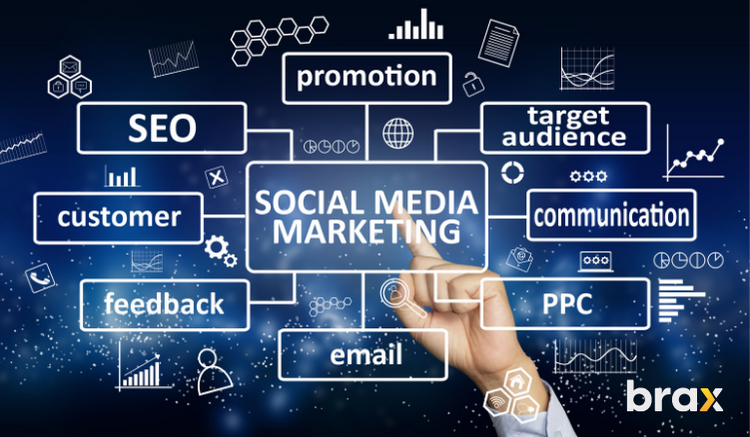
4. You can reach your audiences faster.
With paid social media marketing, businesses can reach their target audiences much faster than with organic methods. Paid advertising allows you to place your ads in front of potential customers immediately, meaning that you can see results more quickly.
Additionally, paid social advertising allows for greater flexibility and precision when targeting audiences, making it a more effective method overall.
5. You can optimize your marketing strategy more easily.
Paid social media advertising allows you to adjust your bids, budgets, and targeting options on the go. This means that you can tweak your marketing strategy to get better results and find the most effective ways to reach your target audiences.
6. You can reach the right people based on the right ad objective.
Social media platforms are making it their mandate to help advertisers find the right people for their ads. They do this by creating advertising objectives.
Ad objectives are goals that you want your ad to achieve. For example, if you're a luxury car company, your ad objective might be to increase brand awareness or website visits.
However, if you're a small business targeting local customers, your ad objective might be to get more phone calls from people in your area.
So far, Facebook's advertising platform (or Meta's) has some of the most defined ad objectives available today.
A combination of both organic and social media strategies is important to amplify the reach and effectiveness of your marketing.
With an organic social media marketing campaign, you can build trust with your followers and create a community around your brand or product. Then, with paid social media advertising, you can reach a larger audience more quickly and accurately while also tracking the results to improve your marketing strategy.
Different Social Media Advertising Platforms
We all know that advertising is a necessary evil. We have to suffer through it in order to get information about the products we want. But what if there was a way to advertise that didn't feel like advertising? What if you could promote your business without feeling like you were being pushy or sales-y?
This is the promise of social media advertising. With social media advertising, businesses can promote their products and services in a more subtle way. This is done by creating posts that are interesting or entertaining rather than overtly promotional.
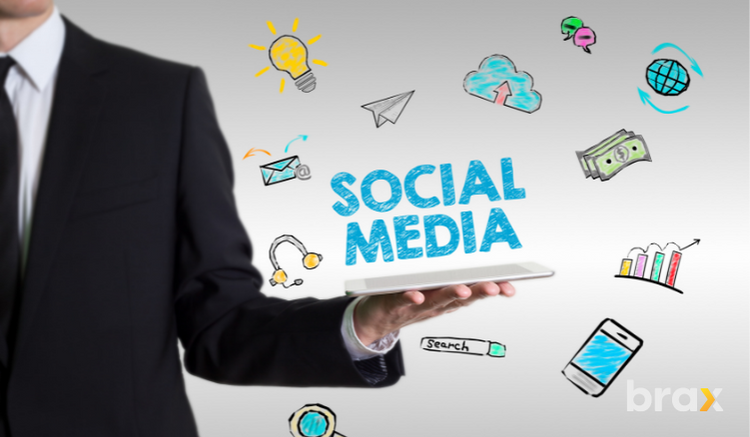
Now if a social media website exists, you can bet your money that there will also be a way to advertise to the users of that specific social media platform.
In this section, we'll discuss the different types of social media advertising platforms. In reality, there are dozens of social media platforms out there, so we'll only be discussing the most prominent ones.
1. Facebook Ads
Rebranded as Meta, Facebook Advertising is the number one social media advertising platform. This is because, as of January 2022, Facebook has a staggering 2.9 billion active users. That's a lot of people that you can reach with your ads!
With almost three billion people tuning in, it's no wonder that the vast majority of Facebook's income comes from advertising.
On top of this, Facebook has one of the best targeting capabilities we've seen. Any advertiser would love to be able to target people by their interests, age, gender, location, and more.
The advantage of using Facebook advertising is that businesses can target their ads to a very specific audience. If you know your audience well, you can even pinpoint the exact people who will be exposed to your ad, thereby increasing your ROI.
To know and understand your audience comprehensively, you should first create a target persona. This gives you an idea of what kind of ads your audience will respond best to, what their interests are, and what you need to do to attract them.
You can also target people who have interacted with your business in the past, such as customers or website visitors. This is known as retargeting, and it's a great way to remind past customers of your business and get them interested in your products or services once again.

Facebook Ads also allow you to create what are called Custom Audiences. These are audiences that have been created by Facebook based on specific criteria that you provide. For example, you could create a Custom Audience of all the people who have visited your website in the last month.
Almost all niches and verticals can work well with Facebook, as long as you know what you are doing.
To learn more about using this platform, visit our guide to Facebook Advertising.
2. Instagram Advertising
Instagram advertising is very similar to Facebook advertising. The basic concept is the same: you create an ad and target it to a specific audience. In fact, Instagram's targeting is very similar to Facebook, especially since they now run on the same advertising platform!
Meta created Facebook Business Manager, a management console that lets businesses control all their Facebook assets from one place. The Ads Manager is the part of this suite that lets you create and manage your Instagram ads.
The big difference between Facebook and Instagram advertising is that, on Facebook, advertisers can have a text-only ad. Instagram uses image and video-based ads.
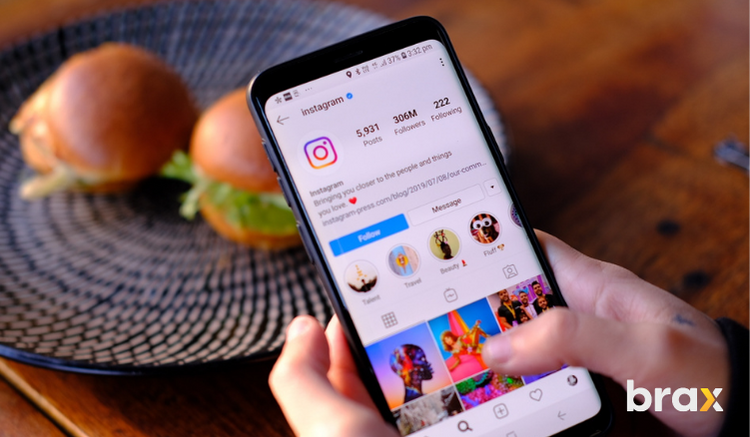
Instagram ads are mobile-centric, too, which means that they need to be designed for a mobile user. This means that the visuals in your ad should be high quality and catch the user's attention quickly.
Although users can access their Instagram accounts via desktop, usage is pretty limited.
To learn more about using Instagram ads for your social media marketing strategy, check out our guide on how to advertise on Instagram.
3. TikTok Ads
TikTok is one of the fastest-growing social media platforms. It is a video-sharing app that is especially popular with younger users. In fact, in 2019, it was the most downloaded app in the world for people aged 12-24.
That's a lot of people!
As such, it's no wonder that businesses are starting to look at TikTok as a potential advertising platform.

At the moment, TikTok doesn't offer the same level of targeting as Facebook or Instagram. However, it does have some unique features that could make it a valuable platform for your social media marketing strategy.
One limitation of TikTok is that video is its only media type, which means that not only do you need to be very creative with your ads, you also need to allocate more time creating video ads as compared to image-based ads.
Ads that worked well with TikTok are those focused on eCommerce products, mobile apps, content promotion (song, movie, etc.), lead generation, and brand awareness.
4. Twitter Advertising
Twitter is a microblogging platform that is most popular with B2B businesses. It's a great platform for promoting content, building relationships with customers and followers, and generating leads.
Twitter Ads are a great way to reach a large audience quickly. You can target your ads by location, interests, keywords, gender, and more.
Twitter allows you to create two types of ads: promoted tweets and promoted accounts. Promoted tweets are simply tweets that you pay to have higher visibility on Twitter. Promoted accounts are just like they sound: accounts that you pay to have more followers.
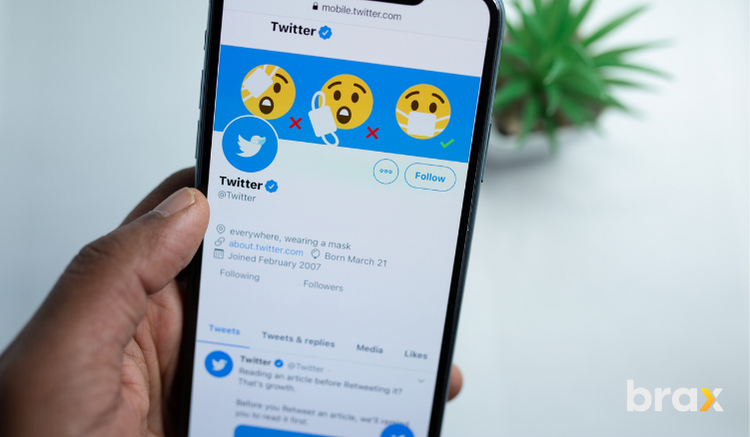
The downside to using Twitter Ads is that it does not offer the same level of analytics as Facebook or Instagram. While they provide ad campaign insights, it is not as in-depth as Meta.
Another downside is the character limit for tweets. This can be a challenge if you're trying to promote a longer piece of content. You would have no choice but to create a Twitter thread if you have more things to say. The question is would your customer be interested enough to click on the thread? You'd have to create a really catchy introduction for this to work.
5. LinkedIn Advertising
LinkedIn is a social media platform that is geared more towards professionals. As of December 2021, LinkedIn had 690 million registered users. Out of these 690 million people, about 44% of them are active monthly users.
It's a great platform for businesses that are looking to build professional relationships with potential customers and partners who are career-oriented.
LinkedIn Ads are great for B2B businesses because LinkedIn has a built-in database of professionals. You can target your ads by company size, job title, skills, and more.
LinkedIn Ads also offers great analytics. You can see how many people have viewed your ad, clicked on it, and even converted to leads. This is an important feature for businesses that are looking to track the return on investment (ROI) of their advertising campaigns.

The downside to LinkedIn Ads is that it can be quite expensive, especially if you're targeting a large audience. It's also important to remember that LinkedIn is a professional social media platform. Your ads should reflect this.
Businesses that fared well with LinkedIn Ads are those who are selling a service or product that is professional and/or expensive. Or promoting a service that is meant to be used by career people.
6. Snapchat Ads
Snapchat is an app that allows users to share photos and videos that disappear after a few seconds. It's mostly used by Generation Z and Millennial audiences who spend at least 30 minutes on the platform a day.
To date, Snapchat has a total of 557 million active users.
While it doesn't offer the same degree of targeting as Facebook or Instagram, Snapchat does have some unique features that could make it a valuable platform for your social media marketing strategy.
Just like TikTok, Snapchat is a video-focused platform. Videos are shown at a 10-second interval and users can only watch them once. This makes it a great platform for creating short, snappy ads that capture people's attention.
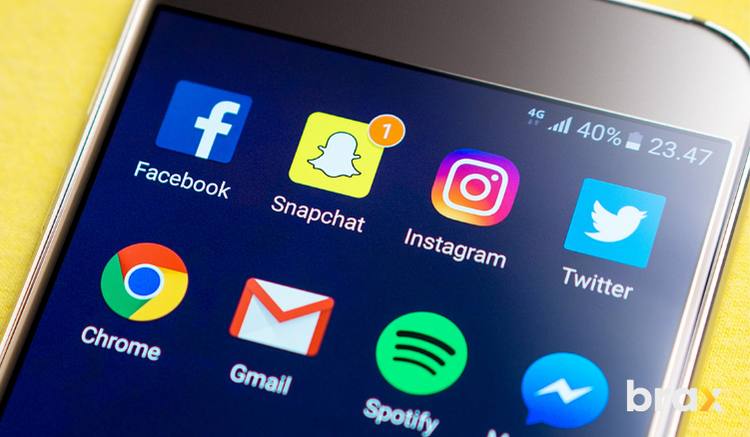
Snapchat also has a "Story" feature which allows users to post photos and videos that are visible to all of their followers for 24 hours. This is a great way to promote a new product or service (this is where Meta got its idea for Facebook Stories and Instagram Stories).
The downside to Snapchat Ads is that it's difficult to track the performance of your ads. Snapchat does not offer the same level of analytics as other social media platforms. This can make it difficult to determine whether or not your Snapchat Ads are generating a good return on investment (ROI).
Another thing to keep in mind with Snapchat Ads is that the platform is still young. The rules and best practices for Snapchat Ads are still evolving. So, it's important to stay up-to-date on the latest changes if you decide to use this platform for your social media marketing.
7. Pinterest Ads
Pinterest is a social media platform that is best known for its image-sharing feature. It has over 444 million active users and is especially popular with women.
Pinterest Ads are a great way to reach out to potential customers who are already interested in your product or service. Since Pinterest is a platform for sharing images, it's a great place to showcase your products or services. You can create targeted ads by using keywords, interests, and demographics.
Pinterest Ads also offers great analytics. You can see how many people have seen your ad, clicked on it, and even converted to leads. This is an important feature for businesses that are looking to track the return on investment (ROI) of their advertising campaigns.
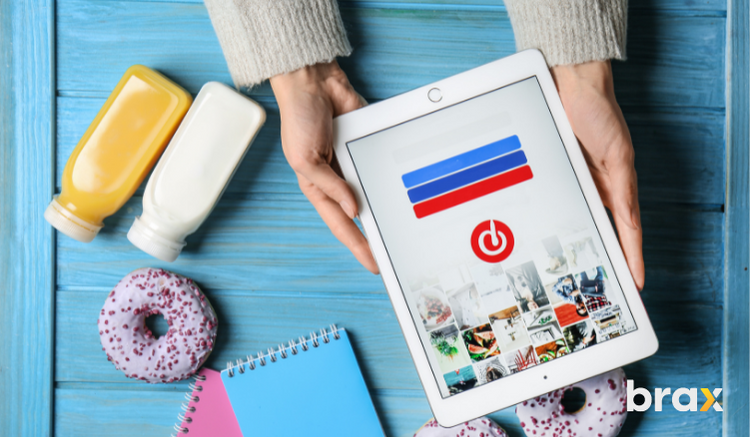
The downside to Pinterest Ads is that it can be quite expensive, especially if you're targeting a large audience. It's also important to remember that Pinterest is a platform for sharing pins, also called Promoted Pins. It is entirely different from other social media ads.
Another downside is that we've been seeing a steep decline in Pinterest users in the past couple of years. In 2021 alone, the number of active Pinterest users was reduced by 47 million!
Businesses that fared well with Pinterest Ads are those who are selling a product or service that is visually appealing and easy to share. Or promoting a service that allows people to save money.
8. WhatsApp Ads
Did you know that WhatsApp is the most popular mobile messaging app in the world? With over two billion active users, it's no surprise that businesses are turning to this platform to connect with their customers.
It's so popular that users exchange more than 100 billion messages each day. As such, it's no surprise that users' daily WhatsApp usage is 38 minutes on average.
It is most popular in countries like India, Brazil, and the US.

WhatsApp Ads are a great way to reach out to potential customers who are already interested in your product or service. Since WhatsApp is a messaging app, it's a great way to connect with customers one-on-one.
Best of all, you can go as targeted as you want with your ads since WhatsApp Ads utilize Meta Advertising, too! Just like Instagram, the WhatsApp company has been acquired by Facebook before it rebranded to Meta.
How to Create a Social Media Marketing Plan
Now that you know all about the different types of social media ads, it's time to create your social media marketing plan. Here are the steps you need to take:
1. Define your goals and objectives.
Before you start creating any ads, you need to define your goals and objectives. What do you want to achieve with your social media marketing? Do you want to increase brand awareness? Drive more traffic to your website? Increase sales?
Once you know what you want to achieve, you can start creating targeted ads that will help you reach your goals.
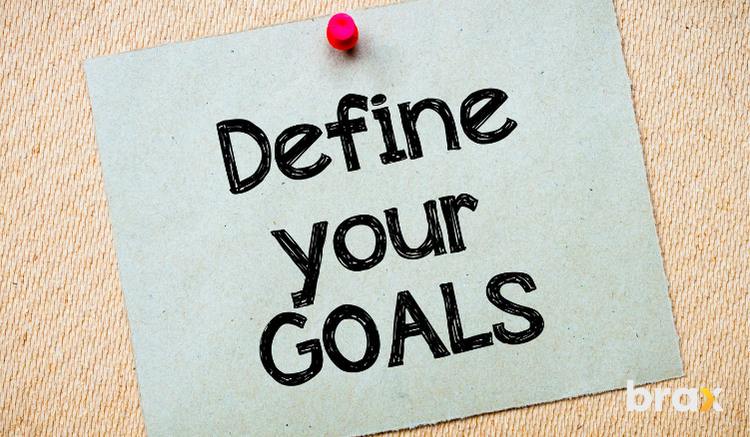
2. Choose the right social media platforms.
Not all social media platforms are created equal. Some platforms are better suited for certain goals than others. For example, if you're looking to drive traffic to your website, then you'll want to focus on platforms like Facebook and LinkedIn. If you're looking to increase brand awareness, then you'll want to focus on platforms like Instagram and Snapchat.
3. Create targeted ads.
Once you know which social media platforms you want to use, it's time to start creating targeted ads. You can do this by using keywords, interests, and demographics. This will help you reach out to potential customers who are already interested in your product or service.
In as much as different social media platforms have various types of audiences, different social media ads also have varying targeting options. You must learn about how to effectively narrow down your audience before setting your ad live.
4. Track and analyze your results.
It's important to track the results of your social media marketing campaigns so that you can see how well they're performing. This will help you determine which ads are working and which ones need to be tweaked or scrapped altogether.
In fact, we believe monitoring the performance of your ads accurately is so important that we created a comprehensive tracking analytics platform for this purpose—Brax.
Brax is a comprehensive ad management platform that provides you with the granularity to understand how all your marketing channels are working together. This is essential in order to make data-driven decisions on where to allocate your marketing budget for maximum impact.
Whether you are native advertising or social media advertising to promote your business, we can help! Book a demo today to see how we can make your digital advertising life so much easier.
5. Make adjustments.
As you track your results, you'll likely find that some of your ads are performing better than others. When this happens, it's time to make adjustments so that you can improve your results.
For example, if you find that a particular ad is driving a lot of traffic to your website, then you may want to consider increasing your budget for that ad. Alternatively, if you find that an ad isn't generating any leads, then you may want to consider scrapping it.
You can also split test your ads, which means you test two or more versions of the same ad to see which one performs better. This helps you determine which ad is more effective and allows you to make changes accordingly.
6. Keep your social media marketing plan up to date.
As your business grows and changes, so too will your social media marketing plan. Make sure to update it regularly to ensure that it's still relevant and effective.
Your social media marketing plan should be updated regularly to ensure that it's still relevant and effective. This involves regularly reviewing your goals and objectives, as well as your target audience.
You should also review your ad targeting options and make changes as needed. For example, if you find that a particular ad is no longer generating leads, you may want to consider targeting a different audience with that ad.

7. Stay patient and consistent.
Social media marketing is not a quick fix; it takes time and effort to see results. Don't expect miracles overnight, but rather be patient and consistent in your efforts.
Rome wasn't built in a day, and your social media marketing strategy won't be either. It takes time and effort to see results, so be patient and consistent in your efforts.
Creating a social media marketing plan can seem like a daunting task, but it's actually quite simple. Just follow these seven steps and you'll be on your way to success.
Frequently Asked Questions on Social Media Marketing
Even if you know the different types of social media ads and the different approaches to social media marketing, you may still have some questions in mind. Let's talk about those.
Can I combine organic and paid social media marketing?
Yes, you can combine organic and paid social media marketing.
In fact, many businesses find that organic social media alone is not enough to generate the results they want, so they use a combination of organic and paid social media marketing.
Conversely, sometimes social media ads alone are not enough. Imagine a customer visiting your business page and seeing no organic posts at all. What would your customer's impression be of your business?
Paid social media advertising allows you to target a specific audience based on demographics, interests, and behaviors, meaning you can easily reach the right people. Organic social media gives your business authority and credibility. So, a mix of both is what will give you the best outcome.
How do I know if social media marketing is right for my business?
The best way to determine if social media marketing is right for your business is to consider your goals and objectives.
Do you want to increase brand awareness? Gain more leads and customers? Improve customer loyalty and retention?
If you want to achieve any of these goals, social media marketing is likely a good strategy for you. However, if your business is in a very niche industry, it may be difficult to reach your target market through social media channels.
In that case, other digital marketing strategies such as SEO or PPC may be more effective.
What are some tips for creating social media content?
When creating social media content, it's important to keep in mind the following tips:
- Make it interesting: People are more likely to engage with content that is interesting and relevant to them. So make sure you produce content that is both interesting and useful.
- Make it visual: People are drawn to visuals, so make sure to use images, infographics, and videos in your social media content.
- Make it engaging: Make sure your content invites people to interact with it. Ask questions, use polls, and include interactive elements like GIFs and quizzes.
- Make it personal: People like to feel like they're connecting with other people, so make sure to include personal stories and insights in your content.
How do I know which social media platform I should use for my business?
You must learn about the audiences of each platform and see if they match your target market.
Each social media platform is different, so it's also important to consider which platform would be the best fit for your business.
For example, if you're a B2B company, LinkedIn would be a better platform than Facebook. If you're a restaurant, Instagram and Snapchat would be good platforms to use.
If your target market is millennials, then Snapchat or Instagram would be a better choice than LinkedIn.
Final Thoughts on Using Social Media Marketing for Your Business
Social media marketing is a great way to reach more people and grow your business. It's important to consider your goals and objectives when planning your social media marketing strategy and to use the right platforms for your business.
Remember that social media is a two-way street, so be sure to engage with your audience and respond to comments and questions.
And most importantly, have fun and be creative!
So there you have it: a comprehensive guide to using social media marketing for your business. By following these tips, you can create successful social media campaigns that will help you reach your business goals.

